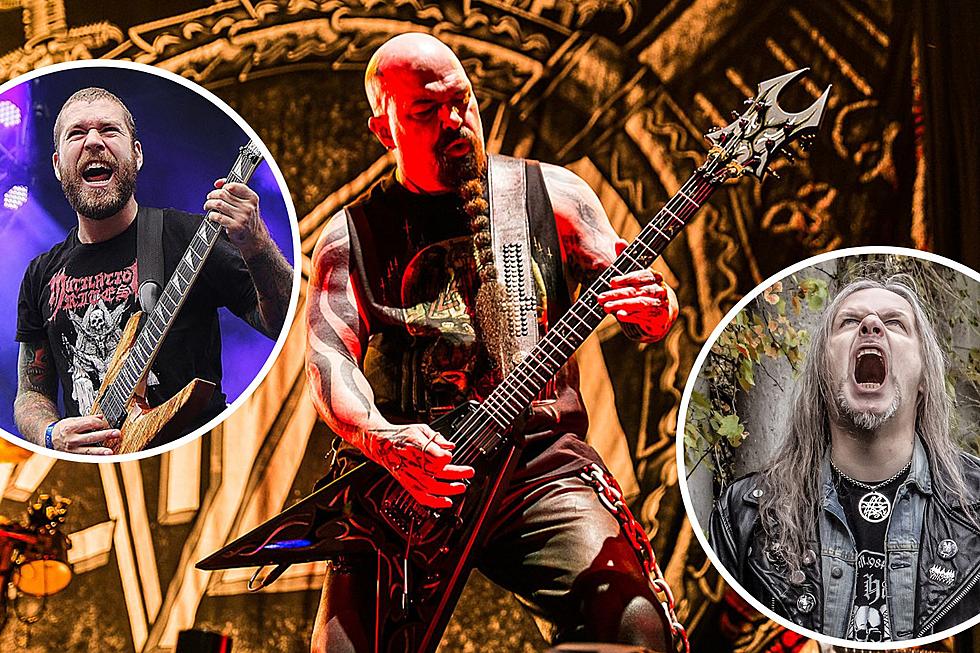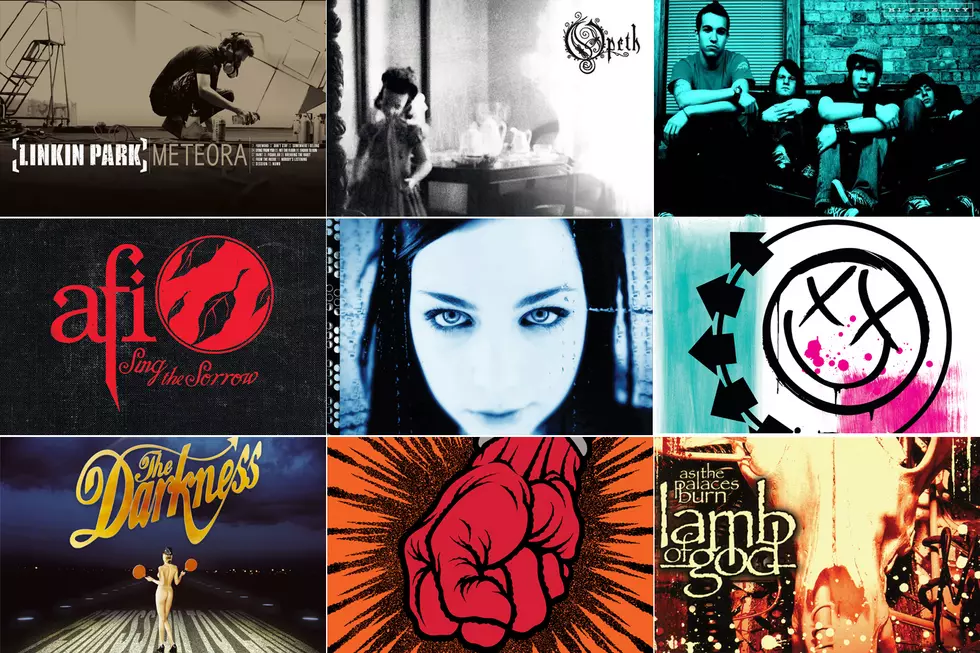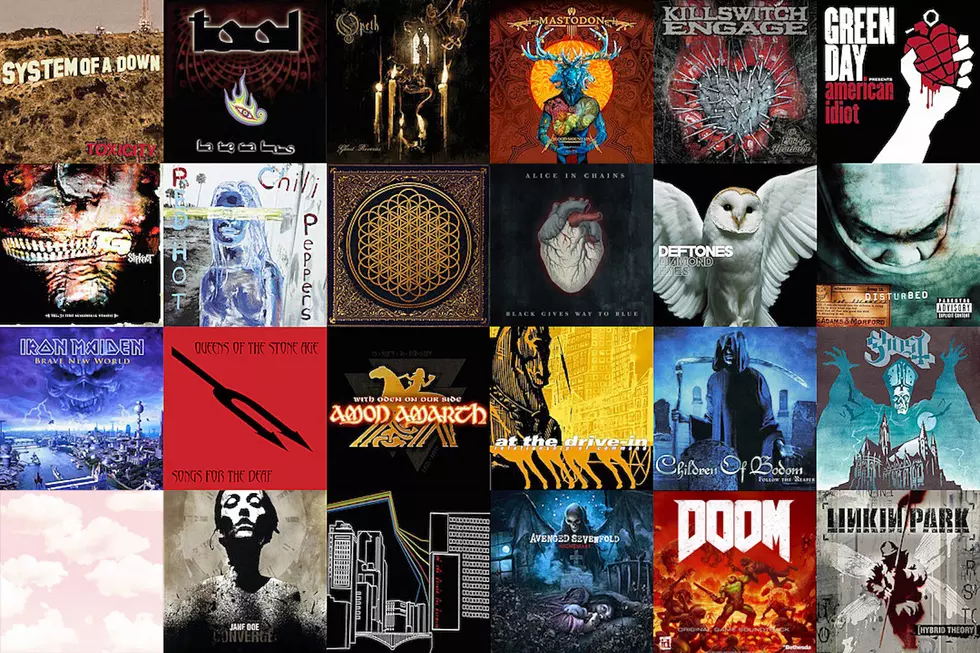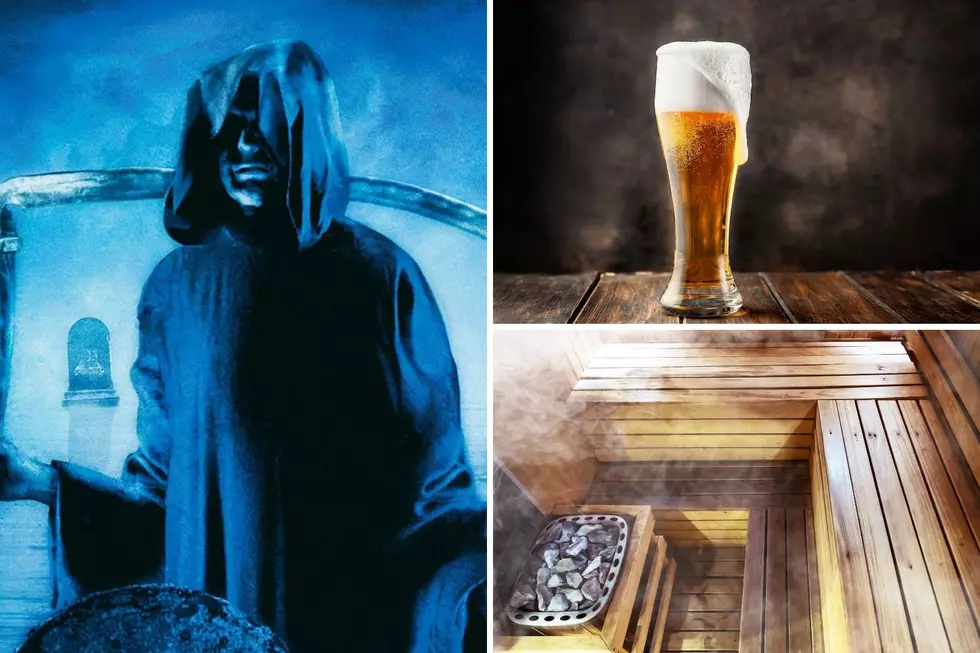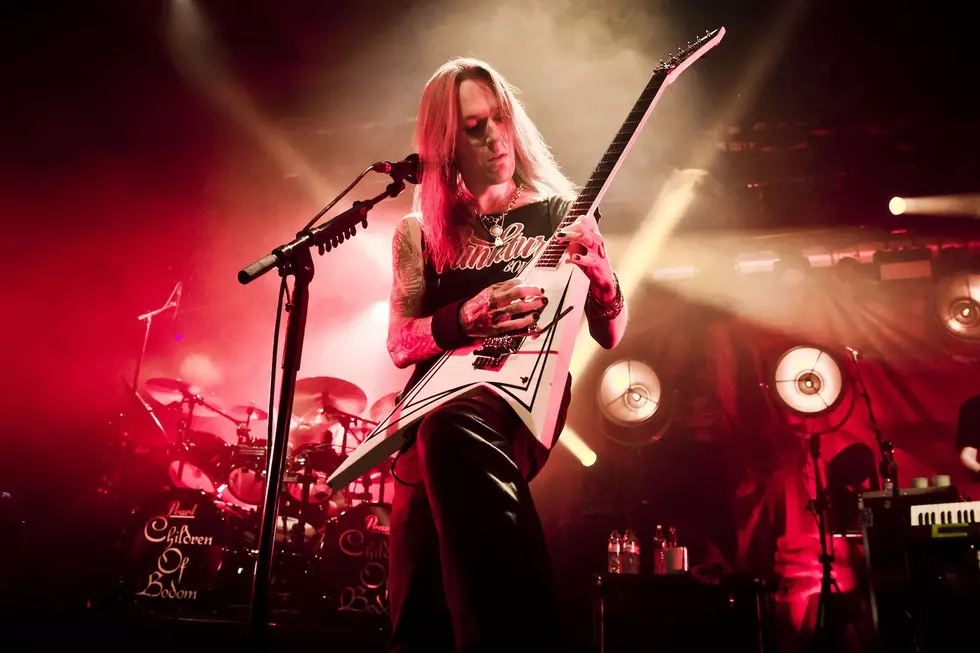
Children of Bodom’s Alexi Laiho Was a Once-in-a-Generation Guitar Hero and Showman
On Jan. 4, the extreme metal community suffered a crushing blow when news broke that Children of Bodom’s Alexi Laiho had died the previous month. After diving back into Bodom’s catalog for two weeks, I was able to reflect on Laiho’s legacy as a once-in-a-generation guitar hero, a world-class showman and an inspiration to countless metal fans.
I’ll never forget the first time I saw Children of Bodom.
It was a gray, bitter February evening in 2008. My best friend at the time was sleeping over, and he had brought a copy of the Finnish quintet’s most recent live album/DVD, Stockholm Knockout Live - Chaos Ridden Years, which he had miraculously snuck past his ultra-conservative Christian parents.
The “Bodom!” chants from the 3,000-strong crowd at the Arenan gave way to the spine-tingling keyboard riff to “Living Dead Beat.” Flanked by toxic waste barrels and a vintage muscle car, the band emerged from the shadows and proceeded to unleash a torrent of bludgeoning riffs, pulverizing breakdowns and whiplash-inducing guitar and keyboard solos.
Within minutes, I became a proud member of the Children of Bodom Hate Crew, or COBHC for short.
At two months shy of 13, I had never seen or heard anything like Children of Bodom. My headbanger’s journey had only begun a few months earlier when I pilfered my neighbors’ CD collections for classics such as Metallica’s Black Album and Iron Maiden’s The Number of the Beast. Bodom paid reverence to their forebears but dialed the intensity up to 11, fusing the brutality and virtuosity of melodic death metal with the hooks and hedonism of classic metal and hardcore punk.
Helming the onslaught was lead singer and guitarist Alexi Laiho, who died late last month at the age of 41 after “suffer[ing] long-term health issues during his last years,” according to a statement from his management team. The immediate outpouring of praise and sympathy from fellow musicians and fans affirmed Laiho’s legacy as one of extreme metal’s most prodigious and iconic talents — and arguably the last true rockstar to emerge from the genre.
Laiho’s jaw-dropping shredding and songwriting chops were already on full display on Bodom’s 1997 debut, Something Wild, released when he was still in his teens. The guitarist augmented the neoclassical acrobatics of Randy Rhoads and Yngwie Malmsteen with beefy, downtuned riffs and a blood-curdling but surprisingly articulate roar.
Bodom grew tighter and more experimental on successive albums, incorporating elements of thrash, groove and industrial metal across melo-death classics Hatebreeder, Follow the Reaper, Hate Crew Deathroll and Are You Dead Yet? (the last of which capped a nearly unprecedented five-album hot streak). Meanwhile, Laiho further established himself as a global guitar hero, gracing magazine covers alongside Steve Vai and Zakk Wylde and topping countless reader polls.
Laiho’s blistering guitar skills were matched only by his iconic image. With his signature “Scythe” guitar, wild blond mane and baggy camo pants approximately 20 sizes too big, Laiho looked like the comic book version of a heavy metal star in the best possible way. Bedroom shredders and fans everywhere instantly recognized the skeleton-thin guitarist headbanging to and fro or planting his foot on a monitor to rip a dizzying solo with his ax pointed skyward.
Perhaps most crucially, Laiho made extreme metal and guitar histrionics fun again. With nu-metal and post-grunge dominating the heavy music market in the late ‘90s and early 2000s, light-speed guitar solos had gone the way of spandex and Aqua Net.
While keeping their death metal bonafides intact, Laiho and his bandmates restored the genre’s sense of reckless exuberance by wearing their punk and glam metal influences on their sleeves, as evidenced by their covers of Poison’s “Talk Dirty to Me” and the Ramones’ “Somebody Put Something in My Drink.” (And who could forget their brilliantly self-effacing rendition of Britney Spears’ “Oops!...I Did it Again”?)
That sense of recklessness may have also contributed to Laiho’s undoing. The guitarist was a notoriously hard partier with a well-documented thirst for booze, and his live playing grew increasingly sloppy in later years (though this could have also been due to a broken collarbone that went untreated for a decade).
He was also tight-lipped about his personal life. I’m hesitant to ascribe unnecessary meaning to his songs in the wake of his death, but the lyrics to “Hate Me!” — “Every day I'm getting battered up until I bleed / You motherfuckers just leave me be / You never gave me a cure for the pain I feel inside” — now seem deeper than the cartoonish posturing I’d always assumed them to be.
Laiho left this world much as he roamed it: shrouded in mystery, yet with a larger-than-life reputation that preceded him. That reputation — as a once-in-a-generation guitar hero and world-class showman — has inspired countless guitarists to brush up on their chops and purchase a Flying V of their own, myself included. Children of Bodom were hardly known for sentimentality, but I suspect if Laiho convinced just one person to pick up a guitar over the course of his 25-year tenure, he would have considered his life’s work worthwhile.
66 Best Hard Rock + Metal Guitarists of All-Time
More From Noisecreep


